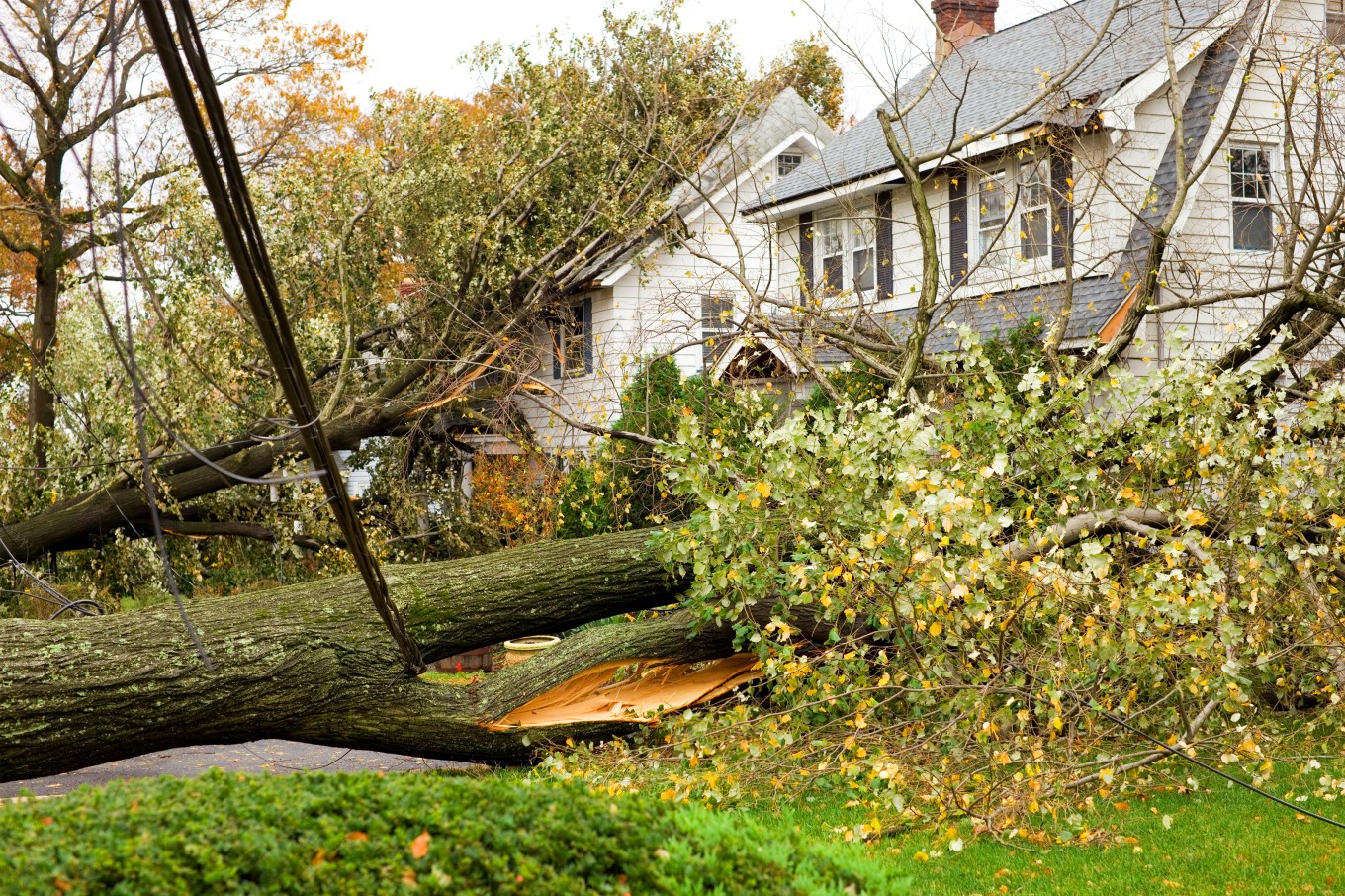A mature tree can account for as much as 10% of your assessed property value, depending on your market. With that much at stake, you sure don’t want to have to yell, “Timber!”
Here’s how to tell if one of your trees is in danger of falling over, and what you can do about it.
How to Inspect Your Trees
No one knows your trees as well as you. So after they leaf out in the spring, leaf off in the fall, and after a big storm, walk around and look at your lovelies, top to bottom, noticing changes in foliage, branches, roots, and bark.
- Inspect all sides of the tree, both up close and from a distance.
- Check for cuts in or peeling bark.
- Use binoculars to inspect the tree’s crown for dead wood and brown leaves.
Leaning Trees
Trees usually don’t grow straight, and a little lean is normal. But when your tree starts looking like the Tower of Pisa because of poor weight distribution or anchor root damage, it’s likely unstable. This is a good time to call an arborist.
Danger signs:
- Cracked or heaving soil, especially on the side opposite the lean.
- Exposed roots around the base of the tree.
Cures:
- Prune branches to distribute weight better.
- Brace the tree trunk with cables attached to stakes on opposite sides of the tree. Make sure to pad the tree before placing cables around tender bark.
Multiple Trunks
A tree with multiple trunks, or with splits in one trunk, can be unstable.
Danger signs:
- V-shaped or U-shaped multiple trunks are weak points for mature trees. The connective wood where the trunks come together may lose strength — and be more likely to split — with age and when storms occur.
- Cracks that extend deeply into or through the trunk.
Cures:
- An arborist can stabilize split trunks by attaching cables between trunks and branches high in the tree. Cables won’t repair existing damage, but they will increase the safety, especially in strong winds, and extend the life of your tree.
- This is dangerous work best left to experts, who will charge between $600 and $2,000; annual cable maintenance costs $100-$200.
Construction Destruction
Construction is tough on trees. Installing a driveway, putting on an addition, and digging up utility lines puts nearby trees under stress. Construction can damage shallow feeder roots, starving and destabilizing the tree. Construction equipment can scrape tree bark, providing a gateway set for disease and infestation.
Danger signs of construction stress (which can show up immediately or years later):
- Damaged bark
- Reduced, smaller, or no foliage
- Premature autumn color
- Mushrooms, conks, and carpenter ants at the base of the tree are a sign of decay and rot.
Cures:
Prevention is your best option. Before construction, set up a barricade around the tree; for each inch in diameter of the tree’s trunk, add a foot of protection. For example, an 8-inch-diameter tree needs a barricade with an 8-foot radius.
If the tree is damaged by construction, act fast:
- Prune to reduce weight and remove damaged limbs.
- Install cables or bracing rods.
- Water deeply.
- Aerate compacted soil around the root zone.
An Arborist to the Rescue
If you think your trees are changing, or you see any of the major warning signs above, they could be “hazard trees” — trees likely to fall and destroy what’s near them — like your house.
This is a good time to call a certified arborist. Get recommendations from friends or neighborhood list serves. Or, contact the International Society of Arboriculture, which maintains a list of certified arborists.
An arborist can help save your tree, or let you know if it’s beyond help. For example, bacteria or bugs could be harming your tree, and an arborist’s inspection ($150-$350) can diagnose which disease, trauma, or fungus is the culprit. An arborist also can determine if your tree is decaying internally, something that may not yet be obvious.
Aborists can either fix the problem, or calculate the risk of the tree falling and the likely objects it could damage. That calculation will help you decide if it’s worth spending money to keep the tree alive and upright, remove the tree, or just let nature take its course and topple the tree at will.
What About Lightning Risks?
If you live on the highest hill in the neighborhood, and own the tallest tree on the block, that’s pretty sweet. But it also increases your chances of a lightning strike.
If lightning strikes one side of a tree, your tree might close the wound and live its life. But if a bolt travels through the trunk, exploding wood and bark and damaging roots, it might be lights out.
To protect trees from lightning, an arborist can ground a tree with a copper cable system that extends from near the top of major trunks down to copper ground rods. These systems can cost $1,500, and may not be worth the money to protect a tree you could replace for $150.
If you’re thinking of planting a tree, you might want to avoid one of these trees. HouseLogic readers told us which trees they love to hate.
Related: Here’s How Trees Add Value and Help You Be More Energy-Efficient
